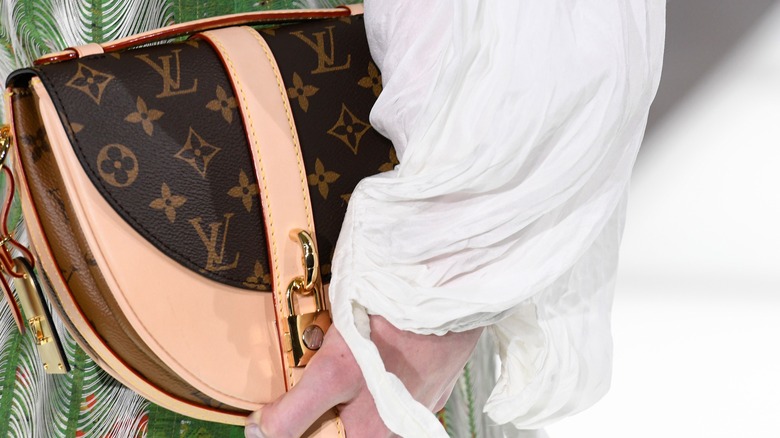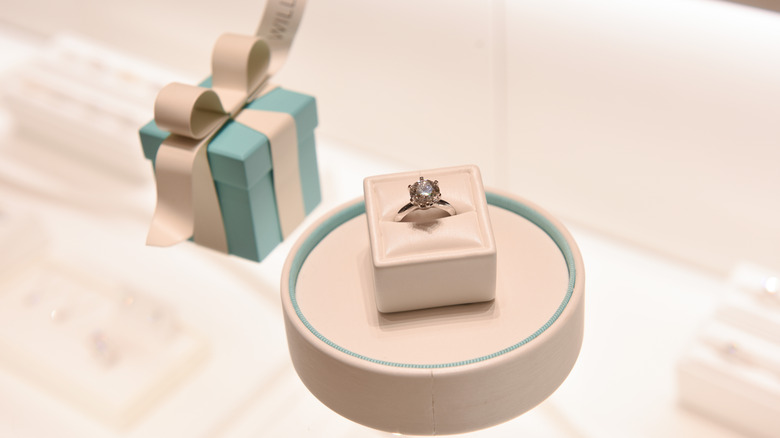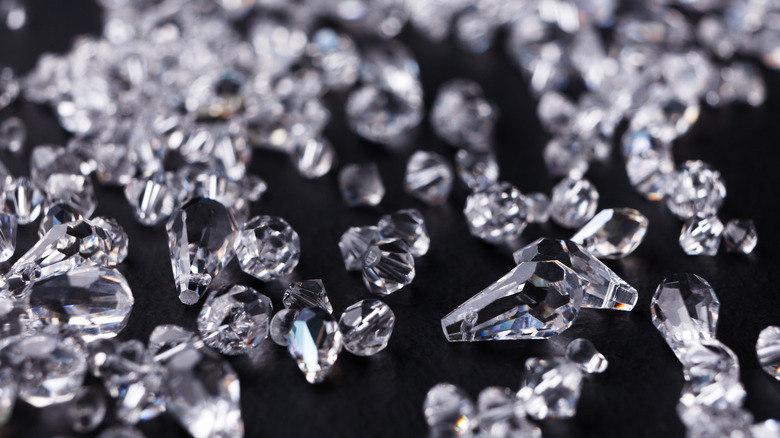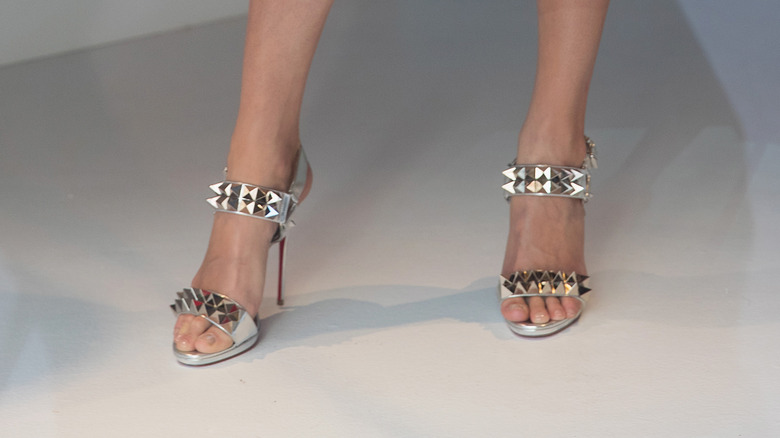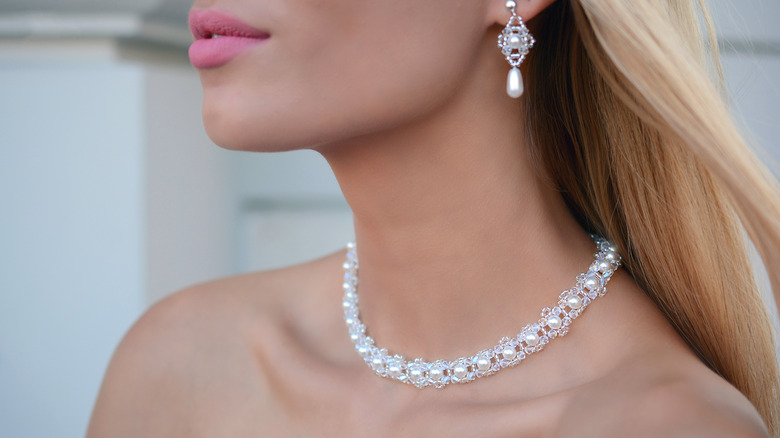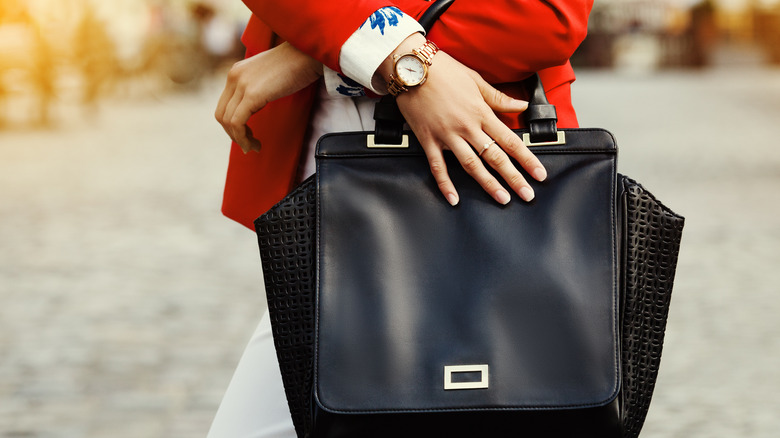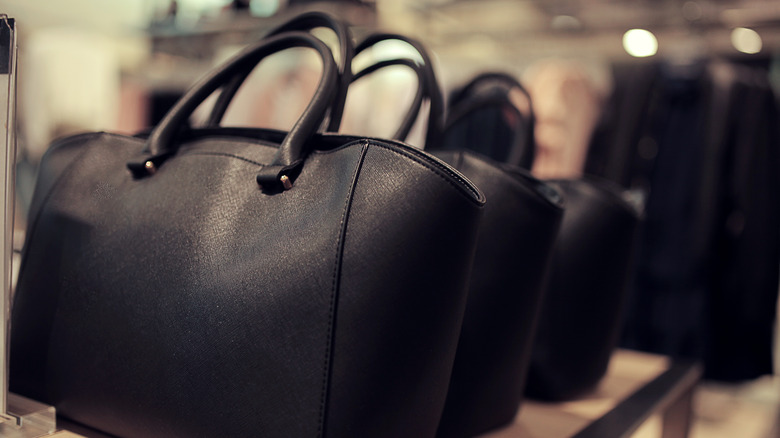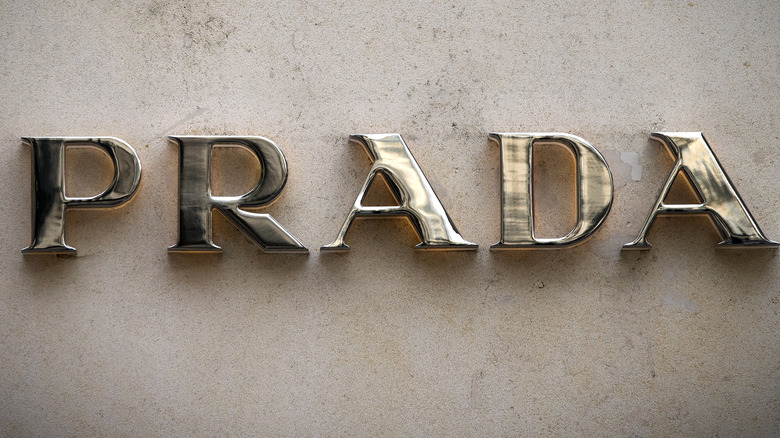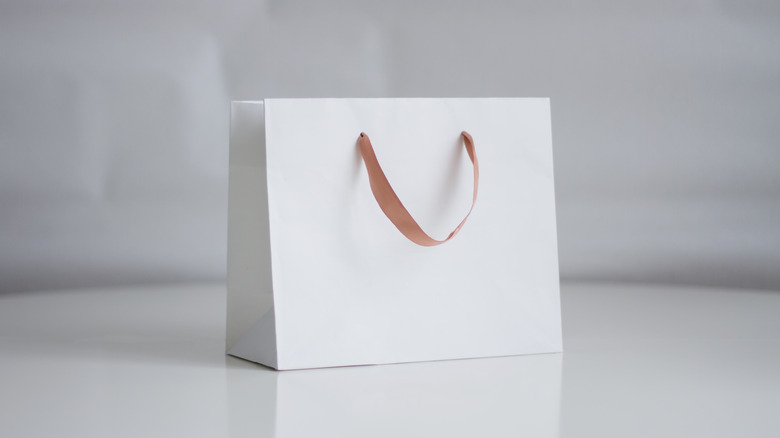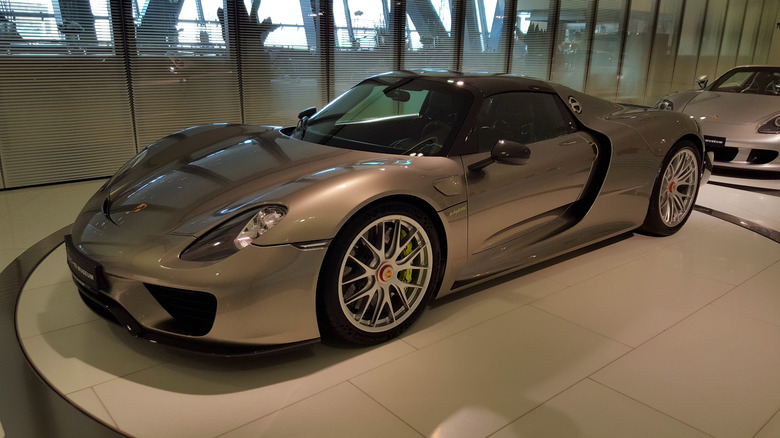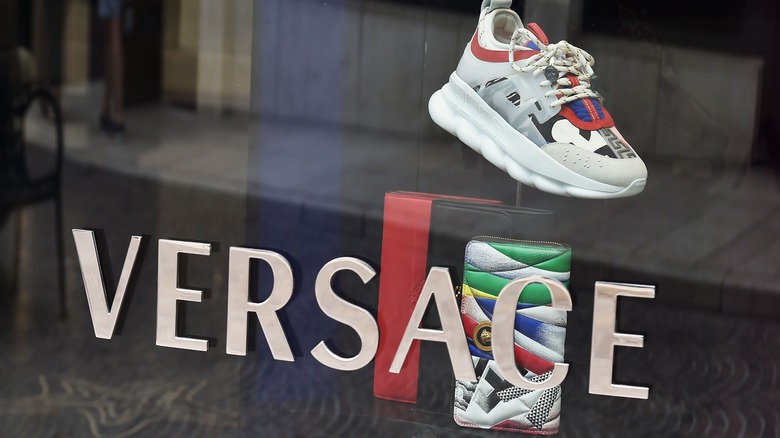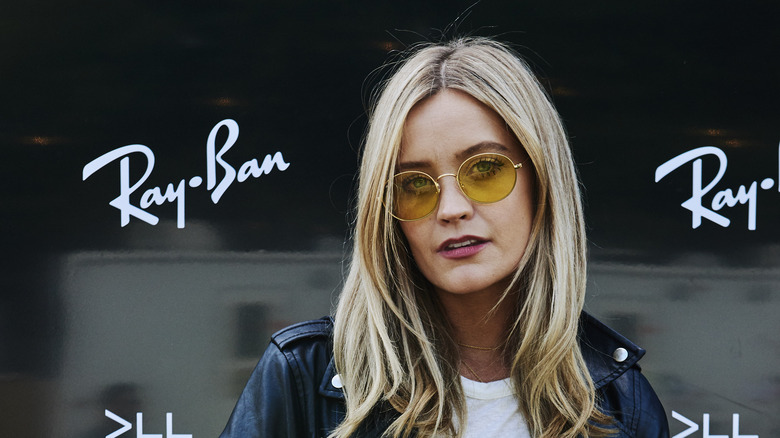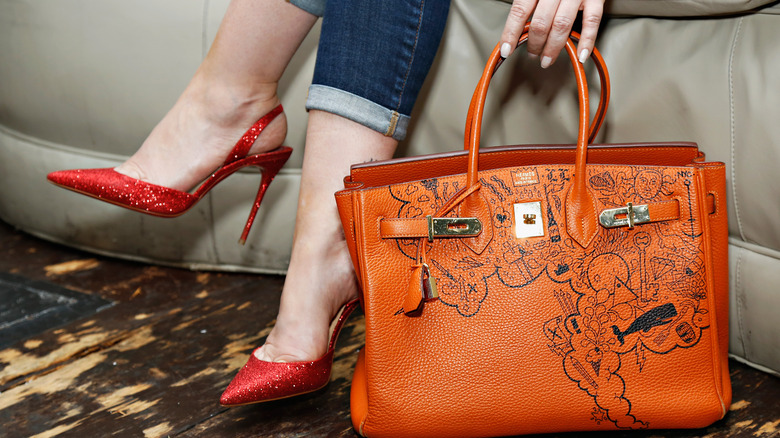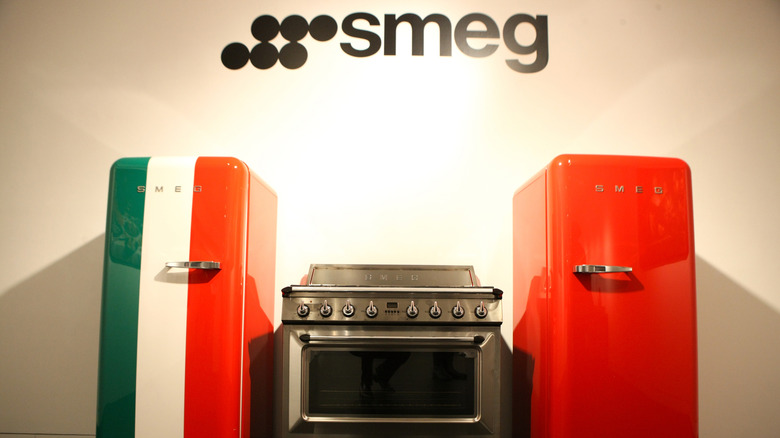Luxury Brands That Aren't Worth The Money
Many people think that luxury brands are made better than other brands, but they aren't always right. This doesn't necessarily mean you should never splurge on a designer label dress or fancy accessories, but it's always good to do your research before you shop. Whether you're looking to treat yourself to something nice or are shopping for the perfect gift, here are some luxury brands that you may want to avoid if you want to get something that's actually worth the high price tag.
Louis Vuitton
Has there ever been a more iconic — or overrated — luxury brand than Louis Vuitton? With a high sticker price, these bags are well-known as an indicator of wealth. But what are they really worth beyond signalling affluence? The markup on Louis Vuitton purses is ridiculous. Way back in the year 2000, the New York Times calculated that the production cost of a Louis Vuitton bag is hundreds of dollars cheaper than what they sell for.
A spokesperson for the company claimed this estimate was inaccurate, but declined to reveal the real production costs. If that sounds fishy, that's because it is. The same spokesperson said that part of what you're paying for is "the product development that is involved in its design" — which is just a fancy way of saying that the company is making a lot of money off of each bag sold.
According to Forbes, Louis Vuitton is one of the most profitable brands in the world "with profit margins north of 30%." It's valued at $28.8 billion, a fortune amassed over more than a century of selling marked-up items.
Montblanc
Luxury brands aren't limited just to clothing, jewelry, shoes, and bags. While the art of writing things by hand is quickly being displaced by modern technology, quality writing instruments still have a dedicated band of followers who are willing to drop hundreds of dollars on a pen.
The very fact the most communication is done electronically these days means that pens are becoming increasingly irrelevant, but the high price tag of a Montblanc pen makes this one luxury good that definitely isn't worth your money. If you really like way a Montblanc pen writes, there's a simple hack that lets you load a far less expensive pen with a Montblanc ink cartridge.
Veuve Clicquot
Whether you're ringing in the new year or celebrating a wedding, a champagne toast is a classy way of commemorating the occasion. That's right, there are even luxury brands for alcohol. While it might be tempting to indulge in a bottle of Veuve Clicquot, do you really need to? It turns out that you can safely save your money without sacrificing quality. In a blind taste test conducted by Which?, Veuve Clicquot lost to far more affordable sparkling wines. Cheers!
Tiffany
Tiffany is one of the most well-known luxury brands there is, but are you really getting what you pay for? If you have more than breakfast at Tiffany's, you're pretty much just shelling out extra money for that blue box. Other jewelers sell quality goods without the steep prices. If you really want the brand name, which many people do, be aware that you're going to be paying extra for it. If you're just looking for beautiful jewelry, however, consider a store like Costco that offers top-quality gems at much lower prices. Good Morning America went shopping at both stores and found that a Costco diamond of a quality similar to one sold at Tiffany's was $10,000 cheaper.
Now, while we're on the subject of products not worth the typical asking price...
Pretty much all diamonds
If you're buying diamonds at all, you're not getting much value for your money. In case you haven't heard the news yet, the diamond industry is a massive scam. First of all, diamonds are nowhere near as rare as we have been led to believe. There are other gemstones, like rubies, which are in far shorter supply. Yet, thanks to an aggressive ad campaign in the 1930s, we still believe that diamonds are the jewel to beat. They're not even a sound investment, thanks to fluctuating values. It turns out that diamonds actually aren't a girl's best friend, no matter what celebrities would have us believe.
Rolex
Rolex is another prime example of an overhyped luxury brand. While the brand is beloved, its overwhelming popularity as a status symbol is a fairly recent development. If you want an elegant and timeless watch, look to Rolex's prime competitor, Omega. Like Rolex, Omega has produced Swiss-made watches for decades and is widely recognized as a luxury watch brand. They also tend to be cheaper, so you'll be getting a much better bargain.
Louboutin
Louboutin sells more than half a million pairs of shoes each year at outrageously high prices. Those red-soled shoes might be iconic, but they're definitely not worth the cost—or the pain. Christian Louboutin himself said that his goal is to make stylish works of art and that comfort isn't even something he prioritizes when designing his shoes. "People say I am the king of painful shoes," the designer told Vogue. "I don't want to create painful shoes, but it is not my job to create something comfortable. I try to make high heels as comfortable as they can be, but my priority is design, beauty and sexiness. I'm not against them, but comfort is not my focus."
The only way that a pair of Louboutins is worth hundreds of dollars is if you believe the mantra that pain is beauty.
Mikimoto
If you love pearls, you're probably familiar with this luxury brand. Widely acknowledged as the best cultured pearls that money can buy, even a simple strand of Mikimoto pearls can cost thousands of dollars. At the end of the day, though, they're only cultured pearls — which means they're nowhere near as rare as pearls that are grown naturally and harvested. In fact, there's really not much of a reason to dish out the big bucks on pearls at all; most people can't tell the difference between real and fake pearls, anyway. If you're looking for that perfect strand to complete an outfit, go ahead and buy some imitation pearls — we won't tell.
Coach
Once touted as one of the most popular handbag lines in the world, Coach has recently declined in popularity after too many sales made them far too accessible to be considered exclusive. Coach is trying to rectify that problem by introducing even more expensive bags to its already pricey line and cutting back on online flash sales. While things are getting better for the company, Coach is no longer viewed in quite the same light, which is something you may want to consider if you're purchasing one of their bags in order to make a statement.
Michael Kors
There was a time when Michael Kors handbags were highly coveted status symbols, but the MK bubble burst right around the same time that Coach began to lose its following. According to Business Insider, the brand's overexposure led to a huge decline in sales.
Fortune said that "Michael Kors created a ubiquity that was contradictory to a luxury cachet and hurt its ability to turn out new and exciting products." The company is trying to turn itself around and improve its image, but it isn't quite there yet. While the company still markets itself as a luxury brand, if you're going to shop Michael Kors you should wait for one of its many sales which often feature markdowns up to 50 percent.
Prada
While Prada might sell some quality goods befitting luxury brands, some of their offerings are questionable to say the least. For example, there is absolutely no world in which a $170 paperclip can be worth the cost. Sure, it's made out of sterling silver and is officially advertised as a money clip, but if you have so much cash that you can sink nearly $200 on a money clip, then you have too much cash for a money clip to hold. The high price tag is in keeping with the line's other outrageously priced products; the average cost of a purse runs into the thousands.
Balenciaga
Balenciaga is another designer that likes to take everyday products, throw their spin on them, and then sell them at ludicrous prices as if the most important thing is owning luxury brands of everything. In 2017 they debuted a $2,145 tote bag that looks suspiciously like the ones Ikea sells for just a dollar.
While the Balenciaga version swapped out Ikea's recyclable plastic for leather, that's still quite a hefty markup considering how similar they look in practice. If you don't want to spend that much money on a tote bag, Balenciaga has you covered with this calfskin shopping bag–which looks identical to a paper shopping bag. At just $1,100 you're getting a bargain as far as Balenciaga is concerned, but still paying way too much money.
Porsche
Porsche is one of those names that makes people stop in their tracks. The name of the luxury car brand exudes indulgence and automotive superiority, but how much bang are you really getting for your buck? According to automotive journalist Thomas Bey for AskMen, the 911 GT2, with a sticker price of $194,000, should instead come in at $129,900 if you look at what you're getting for your money. That's still a pretty hefty price tag, but according to Bey, the GT2 doesn't offer enough under the hood to justify the higher figure.
Luxury vehicles are also more susceptible to being marked up to even higher prices by car dealerships, which put a premium on imported cars that are in demand when first landing in the United States. This means that buying a Porsche might cost you even more than the already inflated sticker price. Porsche is also starting to lose its reputation as a maker of flashy cars as they increase sales of their SUVs. While there might be a demand for luxury SUVs, an SUV conjures pictures of suburban family life rather than a fast and carefree lifestyle, which may cause some people to rethink forking money over for the brand.
Versace
Once upon a time, Versace was the brand to beat. Nothing screamed sophistication and class louder than clothes and accessories from this once-timeless brand. Of course, things have changed quite a bit since company founder Gianni Versace launched his first clothing line in 1978. After his death in 1997, the company passed into the hands of his brother and sister, Santo and Donatella, and Donatella's daughter, Allegra.
Perhaps the first sign that things were going downhill for the Versace brand came in 2011 when the company launched a line for budget brand H&M. With prices starting from $19.95, the line was a far cry from the exclusive styles for which it was once known. Still, Versace may have been able to hold onto its reputation if it hadn't been acquired by Michael Kors in 2018 for $2.12 billion. Considering that Michael Kors is another brand whose reputation hasn't been faring too well, Versace being acquired by the floundering business further diminishes the brand's legacy.
Most designer sunglasses
There's something shady about the sunglasses industry, and we aren't just talking about the lenses. It doesn't matter if you're buying a designer pair or some cheap shades from the drugstore. In all likelihood, your sunglasses were made by the same company: Luxottica. Luxottica has a major monopoly on the sunglasses industry, with at least half a billion people around the world likely owning a pair made by the company. They also make frames for optical glasses, although they don't make prescription lenses.
Luxottica makes sunglasses for brands like Chanel, Polo, Tiffany, Coach, and Ray-Ban. While Luxottica won't reveal their exact markup, their designer shades can retail for an estimated 20 times what they actually cost to produce. Many of their cheaper glasses also look quite similar to the more expensive brands, making designer sunglasses quite the rip-off. All you're really paying for is the brand's logo on the side of the frame, which most people probably won't see it anyway.
Hermes
While Hermès still retains its ironclad reputation as being one of the world's most iconic fashion brands, this is still a line you might want to skip if you're looking to get good value for your money. Let's examine the Hermès Birkin, a luxury purse that many consider to be the holy grail of handbags. Prospective buyers have to sign up for a two-year waiting list and fork over a five-figure sum before taking one of these home.
Is it worth the money? Former CEO Patrick Thomas told FashionBeans that the exorbitant price tag is because "there's always one craftsman responsible for the whole process of the bag, from the start to the end." He explained, "To create a single bag, it costs around 15 to 20 hours." Of course, with entry level prices starting at £10,000 (roughly $12,800) that means you're paying nearly $1,000 an hour to have that bag made.
The crippling cost of the Birkin may be part of the reason so many of them end up being put up for collateral at pawn shops. Cost aside, even the person the bag is named for, model and singer Jane Birkin, doesn't want the bag to carry her name because of the cruel treatment endured by crocodiles that are slaughtered for the bags. You're far better off spending your money on a brand that is kinder to animals, not to mention your wallet.
SMEG
There's no denying that SMEG appliances are gorgeous. The retro-style brand was founded in Italy in 1948, but has become more popular since the 1990s when it launched a line of 1950s-style refrigerators. Today, they have other retro-inspired appliances that might look good in your kitchen but aren't so great for your wallet. CNET praised their C30GGRU oven for its sleek design and cherry-red finish, but marked it down for its general lack of usability. With the oven costing $3,199 in spite of not having much to offer aside from looks, it's quite the overrated product.
That's not the worst when it comes to SMEG, though. The brand paired up with Dolce & Gabbana to produce some beautifully designed appliances with astonishingly high price tags. A Dolce Gabbana x SMEG electric tea kettle will set you back a cool $650. That's a lot of money for an appliance that only heats up water. A Dolce Gabbana x SMEG blender will run you $850, while a refrigerator from the line costs a laughable $50,000 (plus $495 for shipping). No refrigerator is worth that much money, especially when it comes with less storage space than the average refrigerator model — the SMEG is less than five feet tall.
